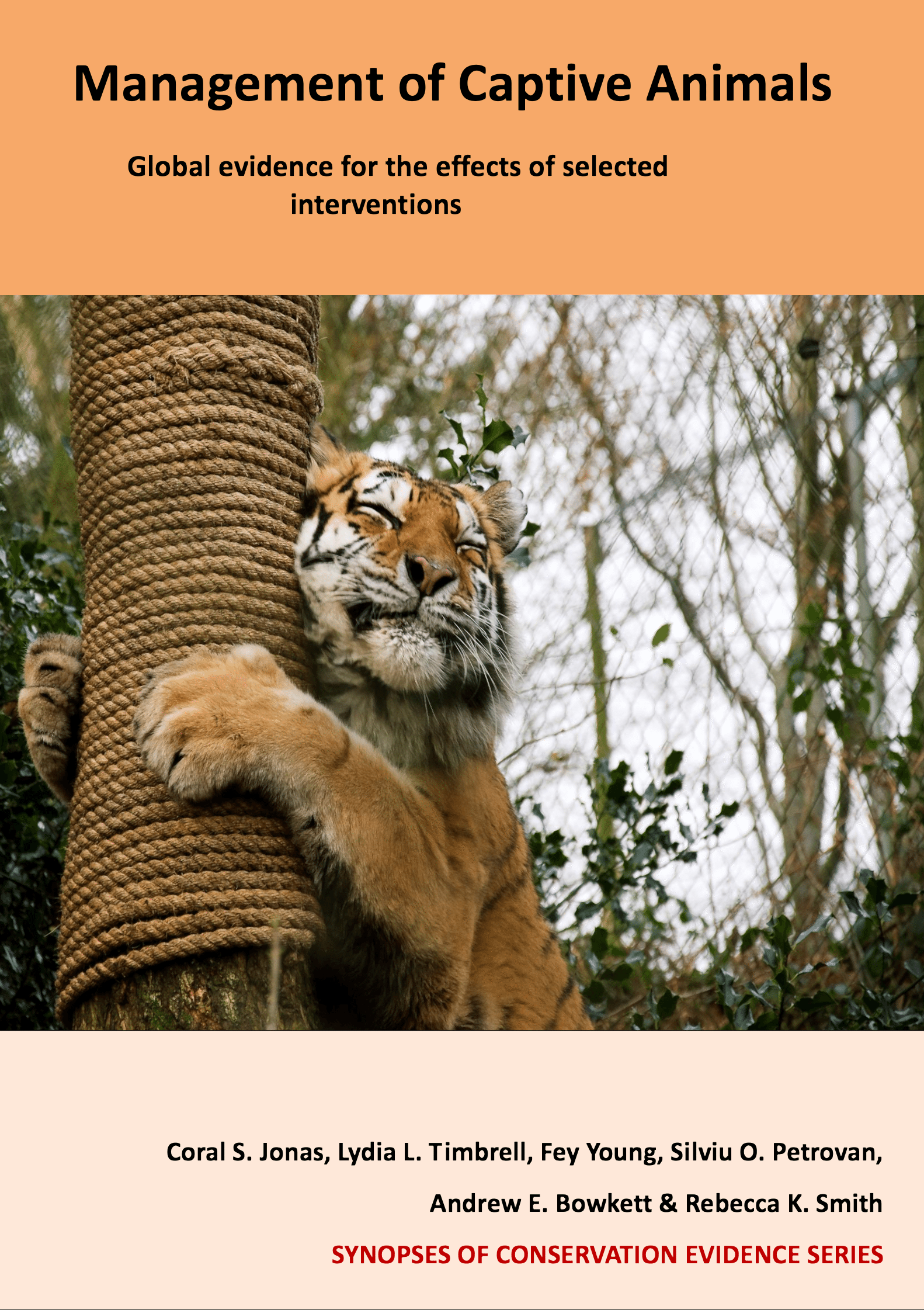Primates: Scatter food throughout enclosure
Overall effectiveness category Beneficial
Number of studies: 4
View assessment score
Hide assessment score
How is the evidence assessed?
Effectiveness
80%Certainty
80%Harms
0%
Study locations
Supporting evidence from individual studies
A replicated, before-and-after study in 1991 in the USA (Byrne & Suomi 1991) found that adding woodchips, into which sunflower seeds were scattered, in enclosures of rhesus macaques Macaca mulatta increased feeding and exploration activities compared to food thrown onto the bare floors. When food was thrown onto the bare floors, foraging time ranged between 1% and 7% of the total time in comparison to 35% when sunflower seeds were scattered in woodchips over the floor. Two groups of rhesus macaques (n=15) were housed continually in bare tiled enclosures with food thrown onto the floor. Woodchips and sunflower seeds were then scattered over the floors of both enclosures for four weeks. Each animal was observed for 10 minutes twice each week between 09:00 h and 10:00 h and between 13:00 h and 14:00 h over nine months. (CJ)
Study and other actions testedA replicated, before-and-after study in 1996 in Atlanta, USA (Baker 1997) found that adding straw, into which food was scattered, reduced abnormal behaviours in laboratory-housed chimpanzees Pan troglodytes compared to bare floors with food presented in one place. The average abnormal behaviour observations were reduced from 10% when food was presented in one place to 4% when it was scattered. Repeated eating of regurgitated food was reduced from 5% to 1% and other abnormal oral behaviours from 4% to 1%. Non-oral abnormal behaviours were not reduced. No evidence of habituation was found over nine weeks. Chimpanzees were housed in five enclosures in groups of two or three. Two cups of mixed seeds and nuts were scattered in the straw of each of the enclosures twice daily. For each chimpanzee (n = 13), behaviour was recorded every 15 seconds over five minutes/day. Observations were carried out on 60 occasions (total of five hours) over three months both during the control and when food was scattered. (CJ)
Study and other actions testedA before-and-after study in 1994 in Georgia, USA (White et al. 1994) found that spreading food over a wider area reduced rates of aggression towards males from female ring tailed lemurs Lemur catta compared to when food was provided in a small area. When food was dispersed within a one metre radius, feeding males submitted to female aggression 42 times, within a two metre radius they submitted 38 times and within a four metre radius they submitted 19 times. Feed was scattered in a circular area to simulate a two dimensional food patch. Food patches with a radius of 1, 2, and 4m were created. All aggressive behaviours were recorded in nine adults and two infant lemurs from when the food was given to the end of the group’s feeding session. Each radius length was tested eight times, during different feeding times. (CJ)
Study and other actions testedA before-and-after study in 2009 in the USA (Ryan et al. 2012) found that when food was scattered throughout enclosures, western lowland gorillas Gorilla gorilla gorilla foraged more and increased their levels of activity compared to when food was offered in one area only. Foraging increased from five minutes (out of 30) when food was offered in one area to 11 minutes when food was thrown into the enclosure (a ‘yard toss’), 15 minutes when food was scattered throughout the yard and 20 minutes when hay and forage filled feeders were suspended from a climbing structure. Inactivity was reduced from 23 minutes (out of 30) to 15 minutes in the yard toss, five minutes when food was scattered and four minutes when feeders were used. Behaviour of all six individuals housed in the same enclosure was observed every minute for 30 minutes before and after each treatment for five days. (CJ)
Study and other actions tested
Where has this evidence come from?
List of journals searched by synopsis
All the journals searched for all synopses
This Action forms part of the Action Synopsis:
Management of Captive Animals
Management of Captive Animals - Published 2018
Captive Animal Synopsis




















